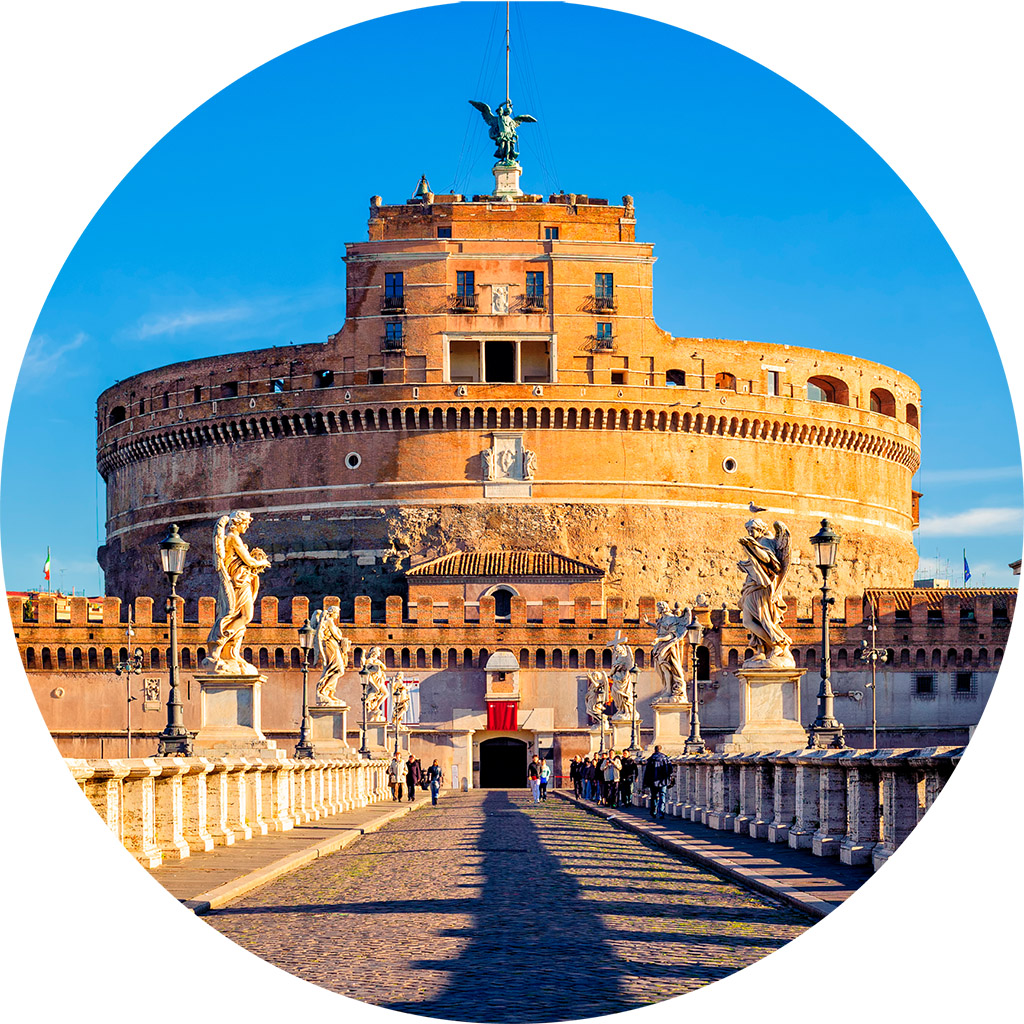
t Castel Sant’Angelo and the bridge leading to it, adorned with statues by Bernini
E4 ⌂ Lungotevere Castello 50 @ 23, 40, 62 to Lungotevere Vaticano or 34, 49, 87, 280, 492, 926, 990 to Piazza Cavour # 9am–7:30pm daily (last adm: 6:30pm) ∑ castelsantangelo.beniculturali.it
A massive brick cylinder rising from the banks of the Tiber, Castel Sant’Angelo began life in AD 139 as Emperor Hadrian’s mausoleum. Since then it has served as a medieval citadel, a prison and as the residence of popes in times of political unrest.

t Castel Sant’Angelo and the bridge leading to it, adorned with statues by Bernini
The fortress takes its name from the vision that Pope Gregory the Great had of the Archangel Michael on this site. From the dank cells in the lower levels to the fine apartments of the Renaissance popes above, Castel Sant-Angelo is now a 58-room museum covering all aspects of the castle’s history. Highlights include the Sala Paolina, decorated with illusionistic frescoes (1546–8) by Pellegrino Tibaldi and Perin del Vaga, and the armoury, which displays a wide range of weaponry of the times. The castle’s terrace, scene of the last act of Puccini’s opera Tosca, offers great views in every direction.
The Vatican Corridor is an elevated 800-m (2,600-ft) passage that leads from the Vatican Palace to Castel Sant’ Angelo. It was built in 1277 to provide an escape route when the pope was in danger. The pentagonal ramparts built around the castle during the 17th century improved its defences in times of siege.

t Courtyard of Honour with stone cannon-balls, once the castle’s ammunition store
Experience Vatican
Timeline |
AD 130Hadrian begins family mausoleum |
271Tomb is incorporated into Aurelian Wall and fortified |

590Legendary date of appearance of Archangel Michael above the castle |
1527Castle withstands siege during Sack of Rome |
1542–9Sala Paolina and apartments built for Pope Paul III |

1870Castle used as barracks and military prison |